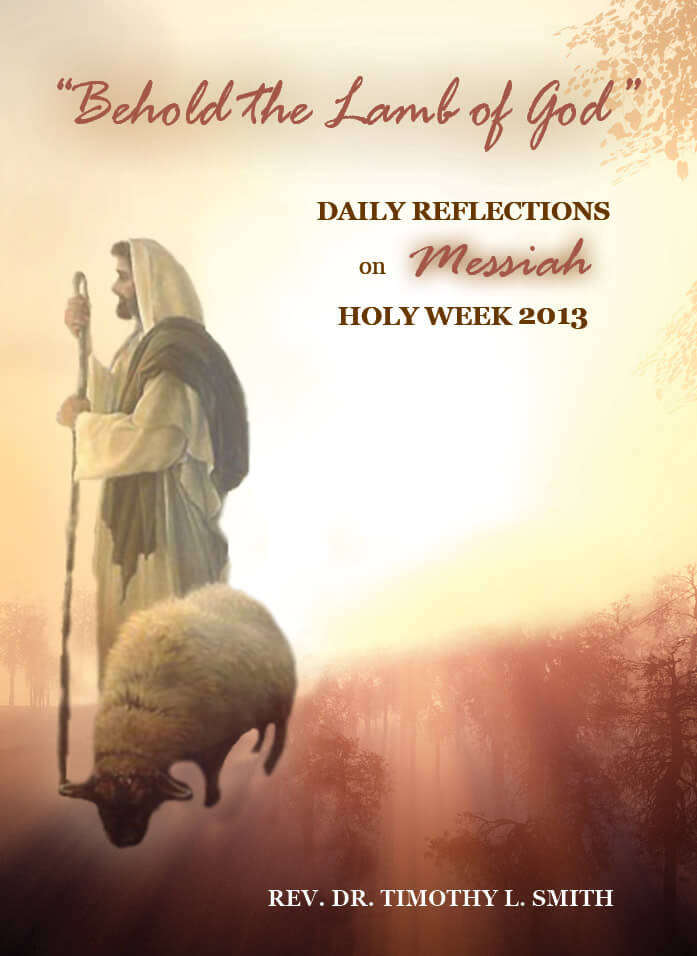As you read and reflect on today’s Holy Week devotional, please listen to this track from “Messiah”.
“Behold the Lamb of God, that taketh away the sin of the world.”
John 1:29
TEXT
These opening words of Part II of Messiah connect us immediately to the opening words of Part I: “The voice of him that crieth in the wilderness; prepare ye the way of the Lord”. We are hearing in today’s text that voice foretold by the prophet Isaiah 700 years earlier. Now we hear John the Baptist in the wilderness preparing the way for Messiah: “Behold the Lamb of God, that taketh away the sin of the world”.
John is dispatched by God not only to identify Jesus as God’s Messiah, but to identify His messianic role: He comes as God’s Lamb. He comes not to shatter the shackles of Rome or to teach ethics to the nations, but to take away the sin of the world. It is to Him that all the sacrifices and prophecies of the Old Testament have pointed.
Read through the Old Testament and you will see pages filled with the foreshadowing of the Lamb. Israel learned about a lamb provided by God all the way back to when God provided a lamb for Abraham in order that he did not have to sacrifice his son (Genesis 22:7-14). Then there was the Passover Lamb first offered up in Egypt, and every Passover that followed (Exodus 12:2-13). Every morning and evening a lamb was sacrificed in the temple (Exodus 29:38-39). For centuries, day after day and year after year, the sacrificed lamb pointed towards the coming of God’s Lamb. The prophet Isaiah foretold Messiah “brought as a lamb to the slaughter” (Isaiah 53:7). The Bible reveals God’s eternal purpose for our salvation through “the lamb slain from the foundation of the world” (Revelation 13:8).
On Palm Sunday the volatile crowds hailed Jesus as a conquering king. They waved palm branches and shouted “Hosanna“ (Save us now). They fancied Jesus as coming to save them from Rome, but He had come to save them from sin. He was headed not to His throne, but to His cross.
On the Christian calendar we call this Palm Sunday, but for the ancient Jews it was Lamb Selection Day. This is the day that the lambs specially bred for Passover sacrifice were brought up from the fields around Bethlehem and led through the Sheep’s Gate in Jerusalem. As specified in the ancient Passover law of Exodus 12, each family would choose a lamb and watch it for 5 days in order to see that their sacrificial lamb was “without blemish” (Exodus 12:2-6).
So on Palm Sunday, the Lamb of God from Bethlehem presents Himself to the people. For the next 5 days they will have opportunity to see that He is God’s perfect Lamb. This is why the Gospel of John is careful to specify that the day Jesus went to the cross was the very day the Passover lambs were slain (John 19:14). Thus, the Apostles testify that “our Passover Lamb has been sacrificed for us” (I Corinthians 5:7). We can know that we are cleansed from all sin, washed “with the precious blood of Christ, like that of a lamb without defect or blemish” (I Peter 1:19).
On this Holy Palm Sunday God presents Messiah Jesus to the world as His perfect Lamb. Let us with the eye of faith behold Him. His power is breathtaking! He takes away the sin of the world. And if the sin of the world, then why not your sin, and mine! Rest yourself in God’s Lamb and believe that the world’s Sin-bearer is yours.
MUSIC
Today’s music fits the irony of Palm Sunday. While the fickle crowds did not recognize Messiah Jesus for whom He is, Handel did. Handel’s music suggests a suffering, slaughtered Lamb presented in royal majestic splendor.
Handel composed this piece in the French Overture style popular in the Baroque period, which he also used in his London operas and oratorios. The French Overture style was often used for turning points in an opera or in the crowning of royalty. Thus, Handel begins in this style with a slow, stately march of dotted rhythms, or long notes alternating with short ones. One can imagine God’s Lamb, King Jesus entering Jerusalem on the foal of a donkey, soon to be crowned with thorns.
This dignified, somber chorus is in marked contrast to the light, airy chorus closing Part I: “His yoke is easy, and His burden is light”. While Jesus’ yoke and burden are easy and light for us, our sins weigh heavy on Him. We have been set free from the guilt of our sin, but only at great cost to the Lamb. Thus, the slow, halting tempo of the music is ponderous and heavy. Messiah is weighed down under the burden of the world’s sin. In the instrumental score Handel even called for “Trills” in the two violin parts that can sound like the bleating of a lamb under a heavy weight.
But God’s Lamb not only bears the full weight of our sin, He takes it away. The rising music line of the chorus singing “the sin of the world” represents the heavy weight being lifted. We can hear the full weight of sin lifted from us as the music moves into the major key and the sopranos reach up for their highest notes of the piece.
Yet the second half of the chorus reminds us again of the world’s sin weighing heavy upon the Lamb. The music is ponderous as the “sopranos sing ‘that taketh away the sin of the world’ all on the same note while the lower parts trudge along in halting dotted rhythms, singing melodies that strive to ascend but never get very far” (Calvin Stapert, Handel’s Messah: Comfort for God’s People).
PRAYING MESSIAH
- What do you sense that God might be saying to you in today’s Scripture text and music from Messiah?
- What do you want to say to God?
- Now take a few moments to be still in God’s presence.



